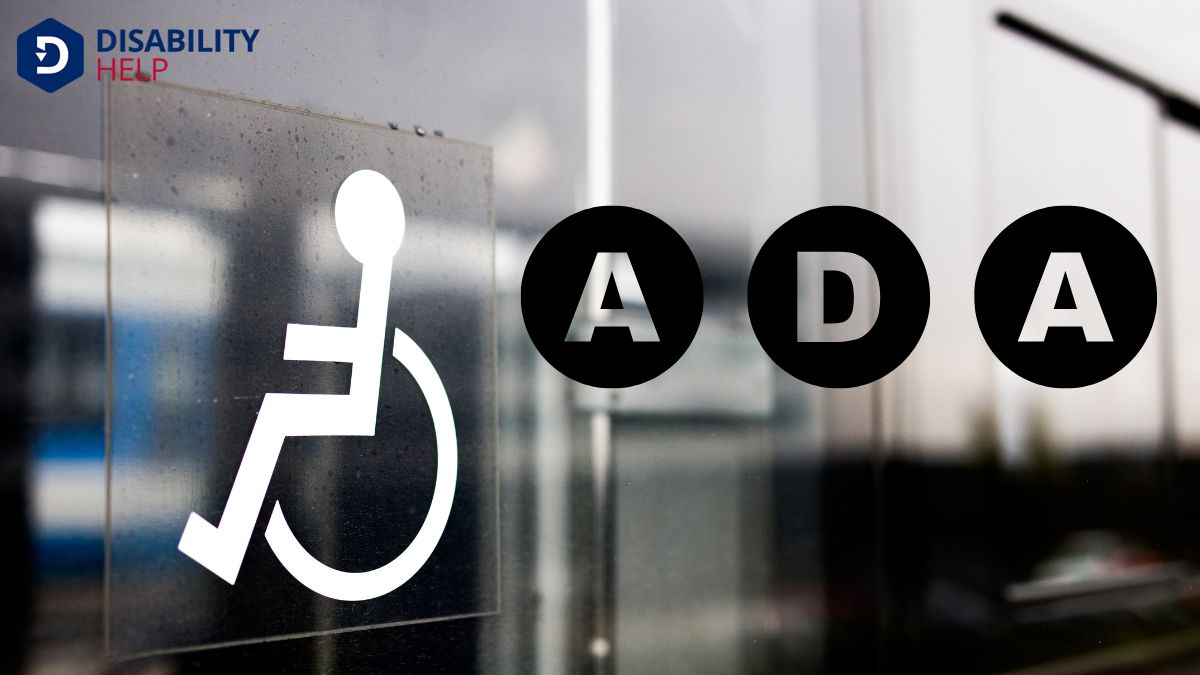To prove disability, we need a strong combination of medical evidence, functional assessments, psychological evaluations, and personal narratives. Medical documentation, including diagnosis and treatment history, is essential. Functional assessments reveal limitations in daily activities and work, while psychological evaluations offer insights into mental health impacts. Personal stories bridge clinical facts with real-life effects, providing a fuller picture of daily struggles. Legal criteria also outline specific standards for demonstrating limitations due to impairments. Handling this intricate combination is key to building a compelling case. There's much more to uncover about the factors making a solid claim.
Key Takeaways
- Proper medical documentation, including diagnosis confirmation and treatment history, is essential for proving disability.
- Functional assessments evaluate daily activities and work capabilities to demonstrate limitations and support needs.
- Psychological evaluations provide evidence of mental health conditions affecting daily functioning and work capacity.
- Personal narratives offer authenticity and context, illustrating the real-life impact of disabilities.
- Detailed physician reports include diagnosis, treatment plans, and limitations, offering credible evidence for disability claims.
Understanding Disability Definitions

Understanding the various definitions of disability is essential for navigating the intricate terrain of disability rights and benefits. We need to grasp how these definitions vary across legal, medical, and social contexts. Each organization or agency might define disability differently, impacting the support and resources available to us.
For example, the Social Security Administration (SSA) defines disability as the inability to engage in substantial gainful activity due to a medically determinable impairment expected to last at least one year or result in death. This definition focuses on the impairment's duration and its impact on workability.
Other definitions might emphasize different aspects. For instance, the Americans with Disabilities Act (ADA) defines disability more broadly, considering a physical or mental impairment that substantially limits one or more major life activities. This broader definition aims to ensure inclusive access to public services and accommodations.
Medical Evidence Requirements
When proving disability, we must gather essential medical documentation that clearly outlines our condition. Detailed reports from our physicians play a crucial role in this process as they provide a thorough view of our medical history and current limitations. Let's make sure we grasp exactly what documentation is needed to build a strong case.
Essential Medical Documentation
Proper medical documentation is necessary for proving disability and ensuring the approval of claims. When we approach the task of gathering medical evidence, we must be diligent and thorough. This documentation serves as the foundation of our case, demonstrating the extent and impact of the disability. Let's explore the key components that should be included:
- Diagnosis Confirmation: We need to obtain official medical records that clearly state the diagnosis. This might include lab results, imaging tests, or other diagnostic procedures that confirm the condition.
- Treatment History: Our documentation should capture a detailed history of all treatments received. It should detail medications, therapies, surgeries, or other interventions. Consistency in treatment and records of any side effects or complications provide a clearer picture.
- Functional Limitations: It's vital to include records that describe how the disability affects daily activities. This documentation can come from occupational or physical therapists, highlighting limitations in mobility, cognitive function, or other essential life tasks.
Physician's Detailed Reports
Physicians' detailed reports are crucial when we're building a strong case for disability claims. These reports offer an in-depth view of our medical conditions, focusing on how they impact daily life and work capabilities. A well-documented report from a physician who knows our history can greatly strengthen our claim, giving decision-makers a clear picture of our struggles.
When we're gathering these reports, we should make sure they include specific details about our diagnosis, treatment plan, response to treatment, and any limitations we face. It's not just about listing symptoms; it's about painting a vivid picture of how our condition affects our ability to perform basic tasks. The more precise the description of our limitations, the stronger our case becomes.
We should also ask our physicians to include any relevant medical tests or imaging results that support their findings. Objective evidence, like lab results or MRI scans, can provide a strong foundation for our claim. When all these elements come together in a detailed report, it offers a credible and compelling piece of evidence in our disability claim process. Let's make sure our doctors understand the importance of their detailed input in securing the support we need.
Role of Functional Assessments
When we're proving disability, functional evaluations play a vital role in painting a clear picture of an individual's abilities. By evaluating daily living skills, we can understand how well someone manages basic tasks. Appraising work capabilities helps us determine their potential in a professional setting. These evaluations provide valuable insights that support the overall case for disability.
Evaluating Daily Living Skills
Functional assessments play a pivotal role in evaluating daily living skills, offering a detailed view of an individual's capacity to manage everyday tasks. These assessments help us understand the specific challenges someone might face in their day-to-day life. By focusing on daily living skills, we gain valuable insights into how well a person can function independently and where they might need support.
To make this evaluation all-encompassing, we can focus on three key areas:
- Self-Care Abilities: This includes tasks such as bathing, dressing, and feeding oneself. Evaluating these skills provides a snapshot of personal independence.
- Mobility and Transportation: Understanding how individuals move around their living space or community highlights their ability to engage with the world around them.
- Household Management: Skills in this category include managing finances, cooking, and cleaning. These are essential for maintaining a safe and healthy living environment.
Assessing Work Capabilities
As we delve into the role of functional assessments in evaluating work capabilities, it's important to build on our comprehension of daily living skills. These assessments offer a practical look at how an individual can perform job-related tasks. They're crucial for determining whether someone can engage in meaningful employment despite their disability. By grasping both daily living and work capabilities, we can paint a fuller picture of what a person can manage in a work setting.
Functional assessments often involve observing individuals in real or simulated work environments. We evaluate tasks like lifting, standing, memory recall, and decision-making. This helps us see where support is needed. It's not just about identifying limitations but also recognizing strengths and potential accommodations.
When we're aware of someone's capabilities, we can better match them with suitable roles or adapt roles to fit their needs.
Ultimately, these assessments are about empowerment. They allow individuals to participate in the workforce to the best of their abilities. By focusing on what they can do rather than solely on what they cannot, we foster an inclusive work environment. Our goal is to ensure everyone has the opportunity to contribute meaningfully.
Psychological Evaluations
Psychological evaluations play a vital role in the process of proving disability, providing objective insights into an individual's mental health and cognitive abilities. These evaluations help us understand how mental conditions may affect one's daily functioning and capacity to work. By collaborating with mental health professionals, we can gather necessary information that supports a disability claim.
Here's how psychological evaluations contribute to proving disability:
- Diagnosis and Assessment: Evaluations provide a formal diagnosis of mental health disorders such as depression, anxiety, or PTSD. This diagnosis is essential in establishing the presence of a disability.
- Cognitive and Functional Analysis: Through various tests, evaluations assess cognitive functions like memory, attention, and problem-solving skills. They also determine how these affect daily life and work capabilities.
- Objective Evidence: Reports from psychological evaluations serve as impartial evidence in disability cases. They offer a professional's perspective on the severity and impact of the condition.
Legal Criteria and Standards
Understanding psychological evaluations is only part of the puzzle when proving disability; we must also navigate the legal criteria and standards set by governing bodies. These criteria can be challenging, but they're vital for recognizing and validating disabilities in a legal context.
Each jurisdiction may have different rules, yet there's a common thread: demonstrating a significant limitation in one or more major life activities due to a physical or mental impairment.
We need to familiarize ourselves with the specific requirements that apply to our situation. For instance, the U.S. Social Security Administration (SSA) has a defined list of impairments, known as the "Blue Book", which outlines conditions that qualify for disability benefits. However, meeting one of these listings isn't always necessary; we can still prove disability by showing how our condition impacts our ability to work or perform daily activities.
Legal documentation is essential. Medical records, test results, and detailed physician notes all support our case. We should make certain that our documentation is current and accurately reflects the severity of our condition. By understanding these legal standards, we empower ourselves to effectively advocate for our needs and rights.
Importance of Personal Narratives
Recognizing the power of personal stories, we discover a powerful tool in proving disability claims. These stories weave together the threads of our daily experiences, offering insights that numbers and medical terminology often cannot. Personal stories give voice to the unique challenges we face, highlighting the human side of disability that's sometimes overlooked in clinical assessments. By sharing our stories, we help others understand the real impact of our disabilities on our lives.
- Authenticity: Our stories bring authenticity to our claims, painting a vivid picture of our lived experiences. They provide a glimpse into our world, illustrating how disability affects us personally and emotionally.
- Context: By offering context, personal stories help bridge the gap between clinical evaluations and real-life implications. They demonstrate how a disability manifests in everyday situations, offering a holistic view of its impact.
- Connection: Stories foster connection, enabling others to empathize with our struggles. When we share our stories, we create an emotional bond that resonates more deeply than statistics ever could.
Through personal stories, we not only advocate for ourselves but also foster greater understanding and empathy from those evaluating our claims. Let's continue to share our stories to illuminate the true essence of living with a disability.
Documenting Daily Limitations
When proving a disability claim, documenting our daily limitations is crucial. We need to clearly illustrate how our conditions impact our ability to perform everyday tasks. This documentation serves as tangible evidence that our disability genuinely affects our daily lives.
It's important to paint a vivid picture of how these limitations prevent us from engaging in activities others might take for granted, like dressing, cooking, or traveling.
To effectively document these limitations, we should keep a daily journal detailing our struggles and successes. It's helpful to note the specific tasks we find challenging, how long they take and any assistance we require. Including the emotional and physical toll these activities have on us can also provide a more detailed view.
Medical records and professional evaluations should accompany our personal accounts, reinforcing the reality of our situation.
Navigating Appeals and Denials

Traversing the maze of appeals and denials can be intimidating, but it's an essential part of the disability claims process. As we navigate this journey together, understanding the steps involved can ease some of the stress. When our initial claim is denied, it's important not to lose hope. Instead, let's focus on the next steps we can take to strengthen our case.
- Review the Denial Letter: The denial letter will outline the reasons for the denial. By carefully examining this document, we can identify any missing information or misunderstandings and address them directly.
- Gather Additional Evidence: We may need to collect further documentation to support our claim. This could involve obtaining updated medical records, letters from healthcare providers, or personal statements that clearly demonstrate how our condition impacts our daily lives.
- File an Appeal Promptly: We must adhere to strict deadlines when lodging an appeal. By submitting all necessary documents within the given timeframe, we guarantee that our request for reconsideration is processed without unnecessary delays.
Conclusion
To understand what proves disability, we've explored definitions, medical evidence, and functional assessments. We've also delved into psychological evaluations and legal criteria. It's clear that personal narratives and documenting daily limitations play a vital role. Finding your way through appeals and denials can be difficult, but with the right evidence and persistence, it's possible to succeed. Let's remember that disability is a multifaceted issue, and proving it requires a thorough approach that combines all these elements.
The post What Proves Disability? appeared first on Resources on Disability Assistance: Your Rights and Benefits.
source https://www.disabilityhelp.org/what-proves-disability/











